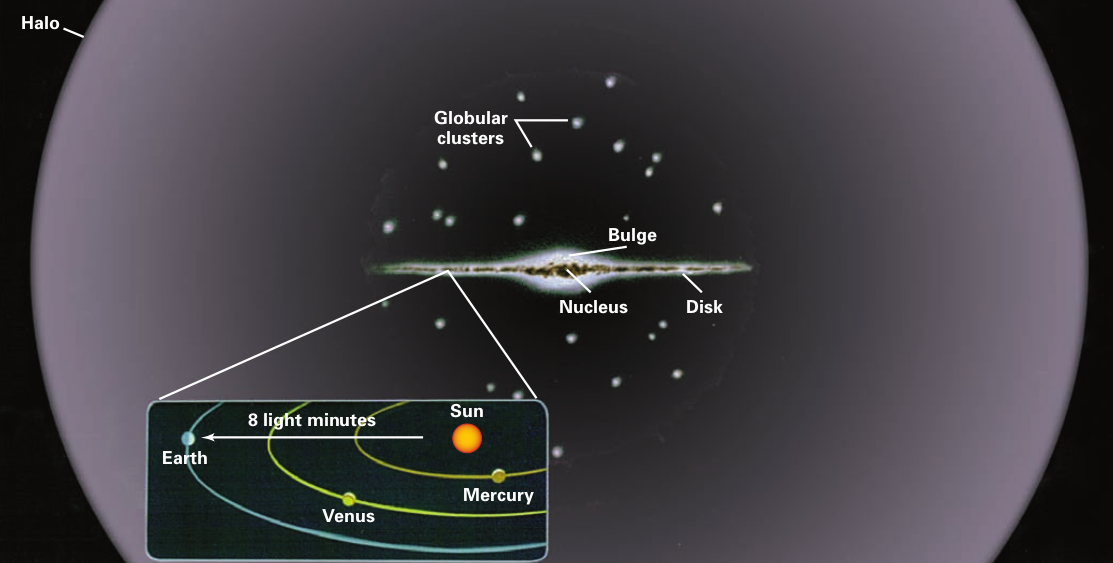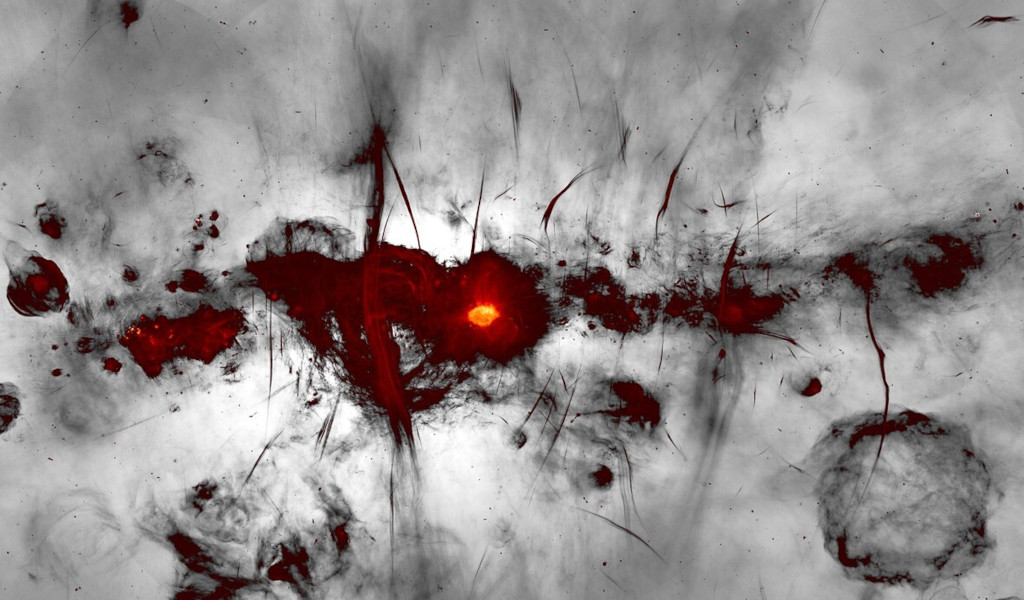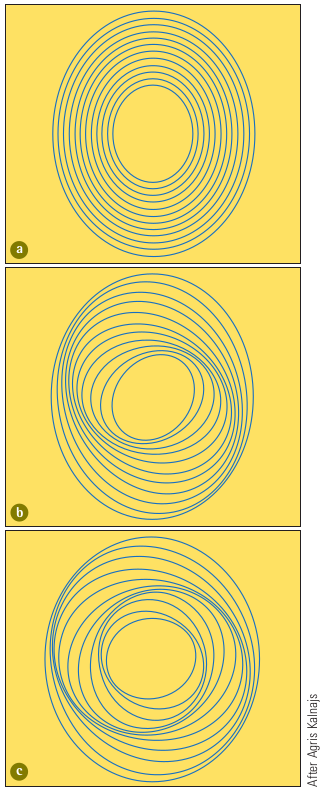Table of Contents
10. The Milky Way
1. Our view of the Milky Way
We are inside the disc of this galaxy, so we cannot see it from outside. But we can see different parts of the disk during different months of a year.
In this video, you see an animation of how Milky Way looks like from Dhaka during different months. Historically, only this shadowy band has been called the Milky Way, in Bangla আকাশগঙ্গা or ছায়াপথ, but the whole galaxy is also called the Milky Way now. Sometimes ‘Galaxy’ with an uppercase ‘G’ also refers to our galaxy, the Milky Way.

2. We are not at the center
How did we first realize that we are not at the center of our galaxy? In 1917, Harlow Shapley located a lot of globular clusters (tightly bound clusters of thousands of stars). And he saw that the globular clusters are distributed in a halo around a point which is almost 25,000 light years away from us.

Here you see the positions of those clusters. And the center is of course the center of our galaxy where there is a supermassive black hole. The globular clusters are not located in the disk of the galaxy. They are old, they are made of old stars. Some of these clusters are as old as the galaxy itself, almost 12–13 billion years.

Our galaxy has 3 main parts:
- The nuclear bulge
- The disk
- The halo
3. Nebula
Nebula is a cloud of gas and dust bright enough emit radiation. But their mechanism of radiation is very different from the radiation of a star. Let us go back to our good old Orion Nebula once again and try to understand what exactly we are seeing in the picture.
The position of the Orion Nebula is at lower part of the Orion Constellation in this picture taken using an ordinary camera.

Here is the image of the Orion Nebula taken by our telescope, Ashvin II.
And here is the Orion Nebula through the eye of the great Hubble Space Telescope. Why is it so red. yes, the colors are not real, and this is actually a composite image that combines visible-light and infrared radiations. But, it is still true many nebulas look red. Why?
3.1 How a nebula shines
Moons shine by reflecting the light of their parent stars. But nebulas shine by not reflecting but absorbing the light of their native and neighboring stars. Let me make the point more clear.
Massive stars emit ultraviolet radiation and the atoms in a nebula absorb that light. Let us see what happens to a hydrogen atom after such an absorption.

Simplistically speaking, a hydrogen atom has a proton at the center and an electron around the proton. The electron has some specific allowed energy levels where it can stay. After absorbing a packet of ultraviolet light, it can jump from the 1st level ($n=1$) to the 3rd energy level ($n=3$). After a while, this electron can jump back to either the 2nd level ($n=2$) or its original home, the 1st level.
If the electron jumps to the second level, it emits a packet of light called the H-alpha photon and the wavelength of this light makes it red. Obviously then, inside a nebula there are a lot of 1-3-2 transitions go on giving rise to red H-alpha light. Do not ask me why it is called H-alpha.
3.2 Emission, absorption, reflection
Nebulas that emit light via transitions of electrons are called emission nebula. They are pretty bright. Orion Nebula can be seen with naked eye as well if you go to a very dark location. Emission nebula can be red or green. Red light comes from hydrogen atoms and green light from oxygen atoms.
But what’s up with the Horsehead Nebula? Why is there a dark region shaped liked a horsehead there?

Because a region shaped like a horsehead is obstructing starlight from reaching us. Instead of emitting its own light the atoms in this region are absorbing the light coming from the stars behind it. So the horsehead nebula has both emission and absorption features. The lower part only absorbs and obstructs. The horsehead is protruding out of that dark lower part. This lower part is an absorption nebula.
The stars that emit the ultraviolet light needed for the nebula to shine are also clearly seen in this picture taken by amateur instruments.
There are reflection nebulas as well that reflect light instead of emitting or absorbing, almost like the moon. These nebulas look blue because the starlight they reflect is blue and also dust is very efficient at reflecting blue light.
4. Galactic center

5. Spiral arms





